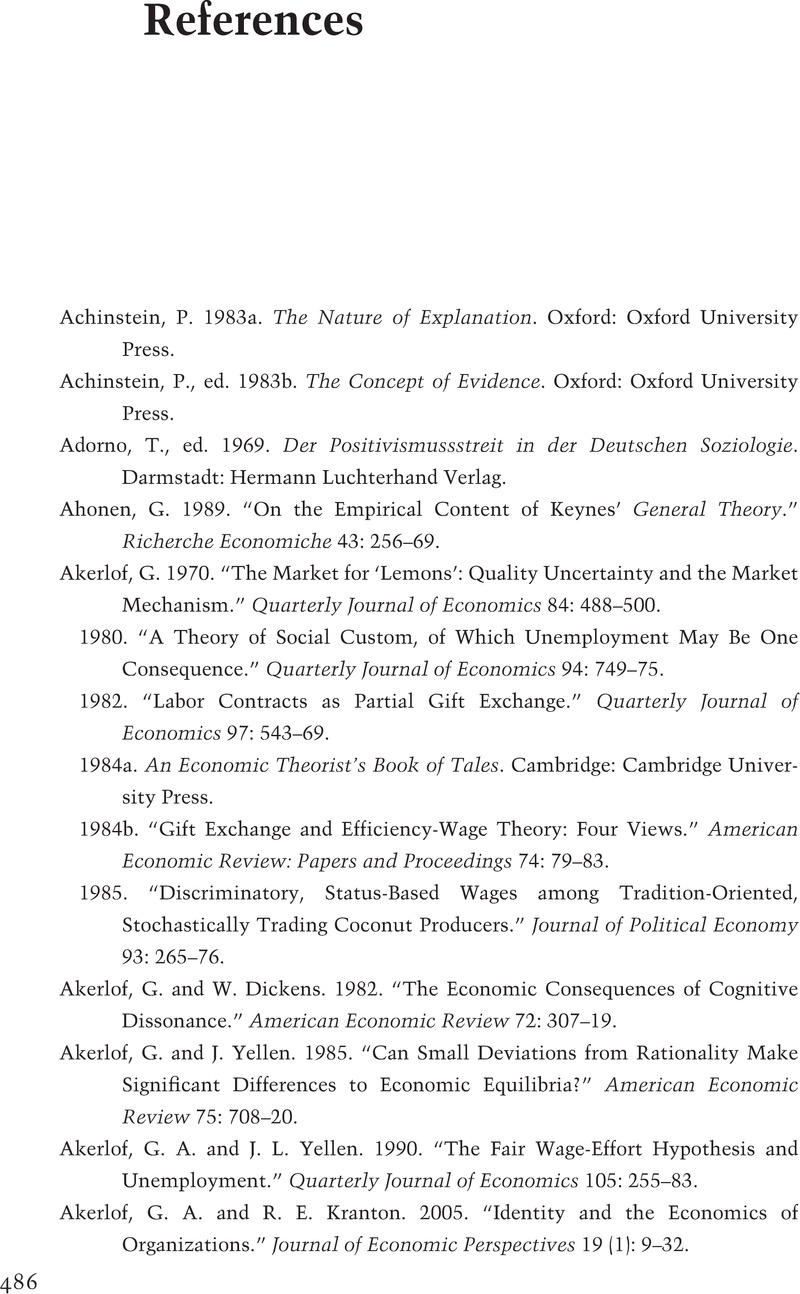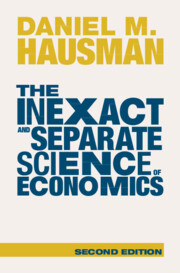Book contents
- The Inexact and Separate Science of Economics
- The Inexact and Separate Science of Economics
- Copyright page
- Contents
- Figures
- Tables
- Introduction
- Part I Introduction: Content, Structure, and Strategy of Mainstream Economics
- Part II Theory Assessment
- Part III Conclusion
- Appendix An Introduction to Philosophy of Science
- References
- Index
- References
References
Published online by Cambridge University Press: 25 May 2023
- The Inexact and Separate Science of Economics
- The Inexact and Separate Science of Economics
- Copyright page
- Contents
- Figures
- Tables
- Introduction
- Part I Introduction: Content, Structure, and Strategy of Mainstream Economics
- Part II Theory Assessment
- Part III Conclusion
- Appendix An Introduction to Philosophy of Science
- References
- Index
- References
Summary

- Type
- Chapter
- Information
- The Inexact and Separate Science of Economics , pp. 486 - 526Publisher: Cambridge University PressPrint publication year: 2023

